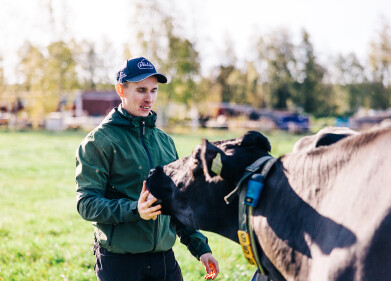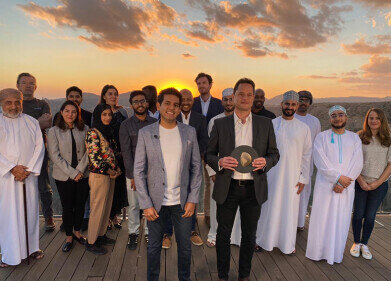Air Clean Up
Can Manmade ‘Super Sponges’ Help in the Fight against Global Warming?
Jul 13 2016
A team of scientists at Australia’s Commonwealth Scientific and Industrial Research Organisation (CSIRO) believe they may have come up with an invaluable weapon in the fight against climate change. Dr Matthew Hill, one of the leading men behind the idea, has developed a new type of super-sponge capable of absorbing carbon dioxide and other pollutants before they reach the atmosphere.
Composed of metal organic frameworks (MOFs), the sponges are durable, efficient and could be significantly cheaper than existing CCS materials. Since flexibility is key when it comes to solving air pollution abatement challenges, this remarkable technology could be a crucial tool in our battle to reduce our carbon footprint.
What are MOFs?
Metal organic frameworks are tiny molecular structures capable of storing vast amounts of gas or liquid. Indeed, MOFs are believed to be the most porous material in the world, with just a teaspoon-sized amount of the substance having enough surface area to cover several football fields.
How does it work? At the risk of bamboozling the uninitiated with science jargon, the MOFs are comprised of a series of metals connected by organic struts. Their structure is similar to that of the scaffolding found on a building site; the corners and joining partitions of the scaffold are metals, the poles are organic struts, taking on a plastic-like composition.
Every single surface area in the MOF is porous like a sponge, soaking up carbon dioxide, hydrogen, water or any other substance which comes into contact with it. As such, scientists are confident they will be able to hold vast amounts of carbon or other pollutants in a relatively small space.
Applying MOFs to carbon capture and storage (CCS)
One of the potential applications of MOFs is CCS. Since they act like sponges, MOFs can be deployed at a fossil fuel-burning power plant, a natural gas wellhead or even directly from the atmosphere. After deployment, the gas becomes safely locked in the MOF until it comes into contact with direct sunlight, at which time it “wrings” itself out like a sponge, releasing the CO2 which can be used for other purposes. The MOF, meanwhile, is free to be utilised again.
Dr Hill and his team are looking at using the MOFs in a series of columns at power stations to capture pollutants as they are released. Once one column becomes saturated with the gases, it would be removed, the gases released and the column returned to duty. In the meantime, the next column in position could take its place.
Initial estimations projected that 150 tonnes of the powder made from MOFs would be necessary to make an entire power plant carbon-free. However, recent developments in innovative methods of structuring the MOFs into a filter layer indicate that only 150kg would in fact be required – a far more achievable figure.
Science outstripping nature
MOFs were first stumbled upon by accident by scientists at the University of Melbourne around 20 years. Over the intervening decades, researchers have taken their inspiration from naturally-occurring structures to develop the technology into that with which we can work today. At present, the MOFs are about 20 or 30 times more effective and efficient than anything found in nature.
Of course, the process is not the finished article quite yet. As with all methods of CCS, further research will be necessary to determine that when the sunlight reacts with the sponge, it does not impact other greenhouse gases (GHGs) or pollutants as an unwanted side effect. Furthermore, scientists are still trying to figure out a useful application for all of this CO2 once it has been released.
For now, though, the future looks bright for MOFs and for CCS, meaning we could have developed a powerful weapon in the fight against global warming.
Events
Nov 26 2024 Paris, France
Nov 27 2024 Istanbul, Turkey
H2O Accadueo International Water Exhibition
Nov 27 2024 Bari, Italy
Biogas Convention & Trade Fair 2024
Nov 27 2024 Hanover, Germany
Dec 11 2024 Shanghai, China







-as-feedstock.jpg)






